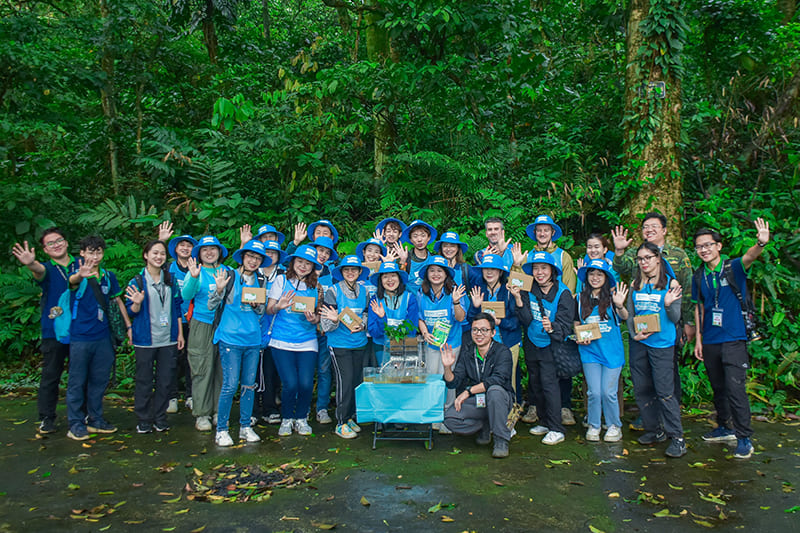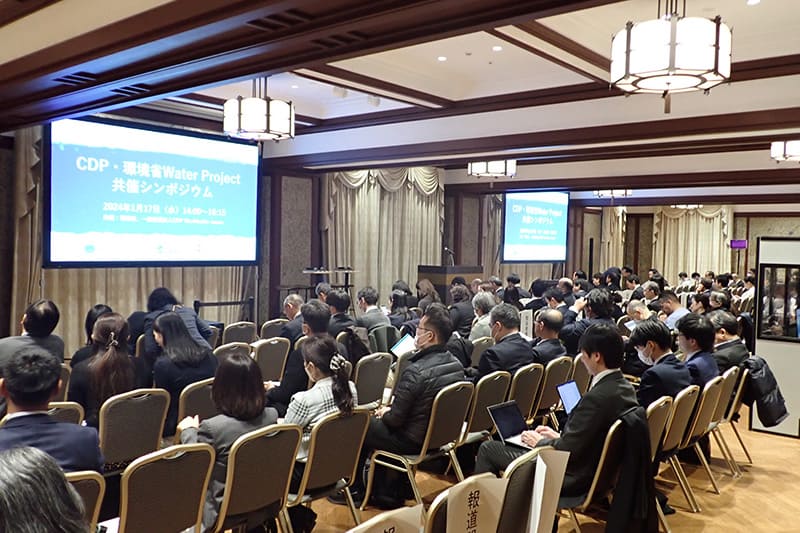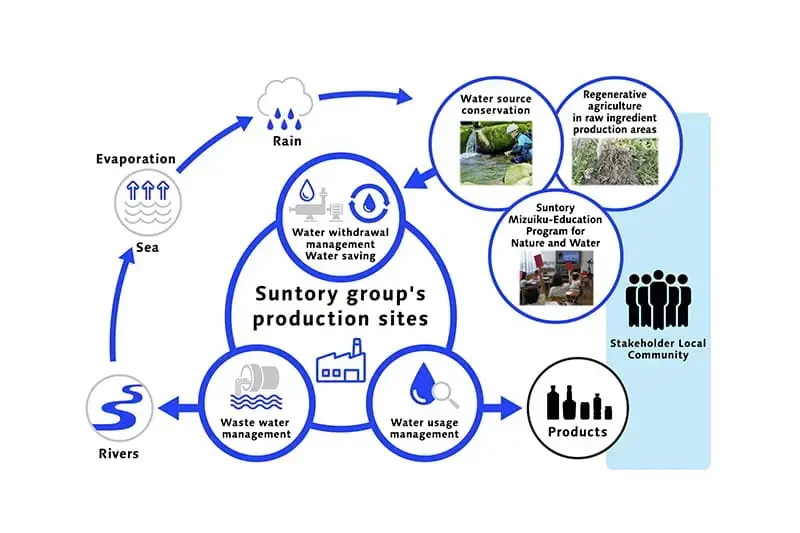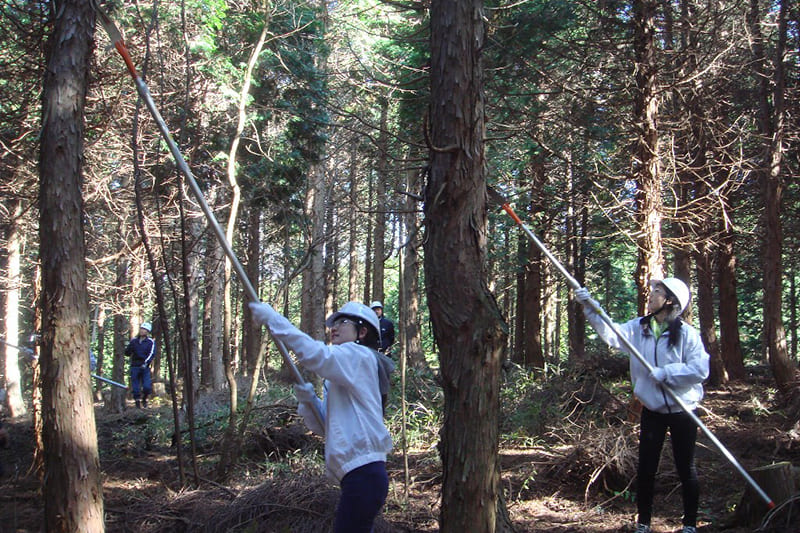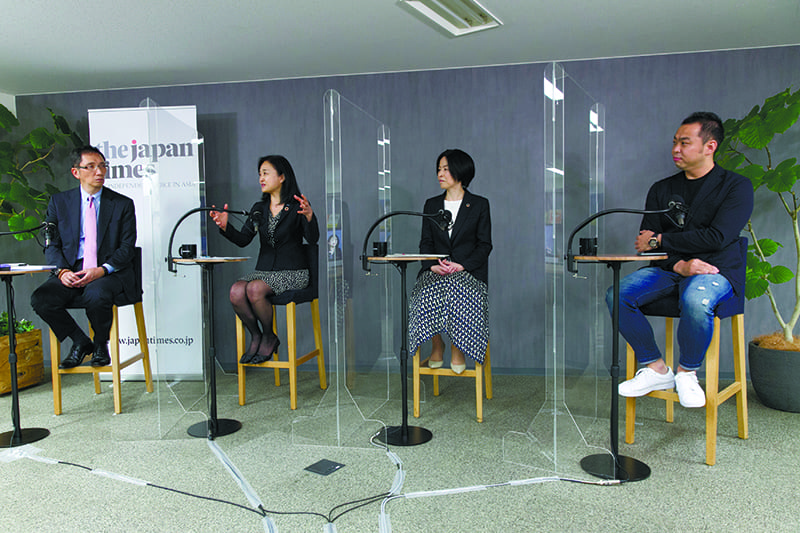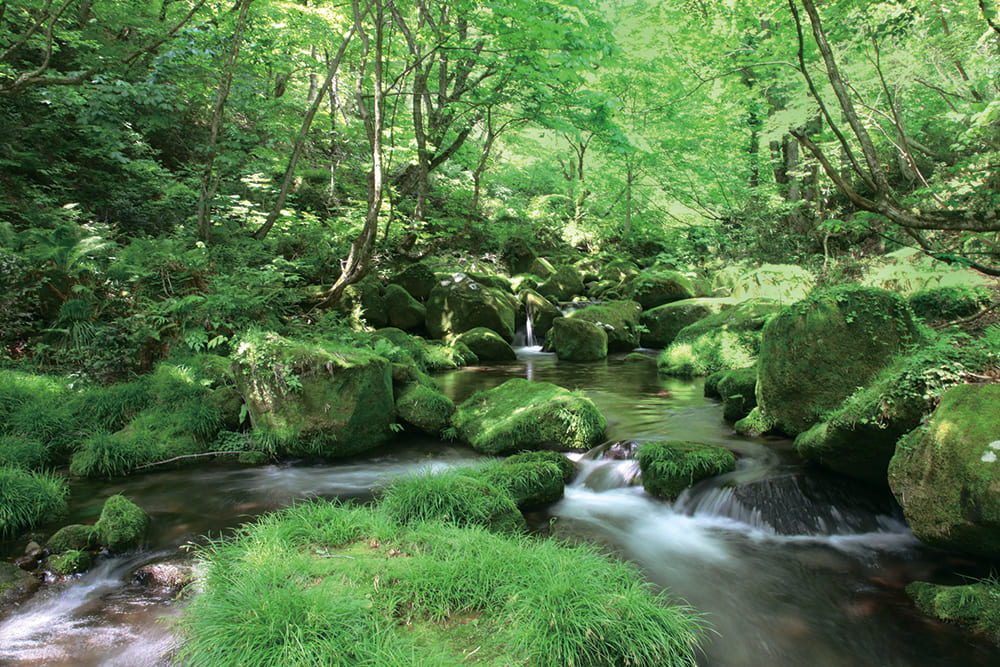August 26, 2022
Suntory preserves ‘lifeline’ of groundwater and forests
SPONSORED CONTENT
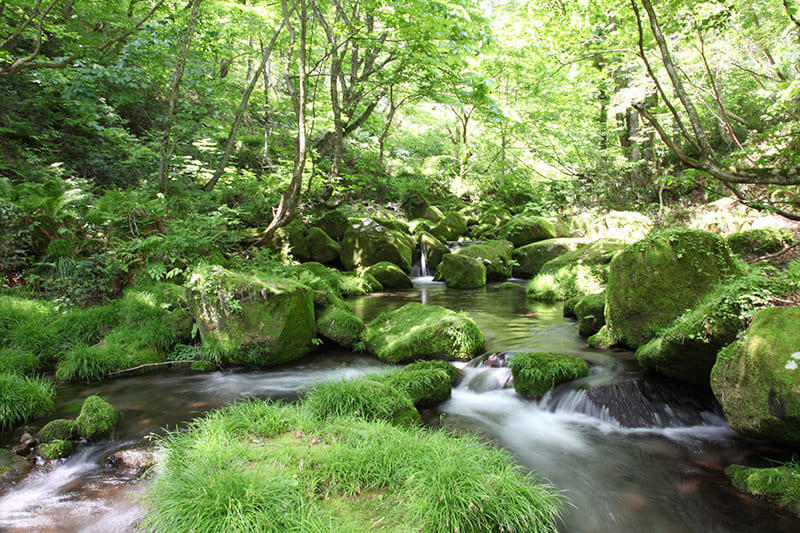
Giving back to society is what Suntory Holdings, a global leader in the beverage industry, has been committed to in many ways since its founding in 1899. One of them is its environmental efforts. Long before sustainability became a general concern of the overall international community, Suntory engaged in various activities to preserve nature in line with its corporate mission statement, “To create harmony with people and nature.”
Among many aspects of nature, the company owes and returns much to water. Water also comes first on the list of the company’s seven sustainability themes that it considers crucial to the survival of its business: water, CO2, raw ingredients, containers and packaging, health, human rights and enriching lives. “Good-quality groundwater is our lifeline, which is why we have been making efforts to preserve forests with the aim to achieve net positive in water,” said Suntory Holdings Chief Sustainability Officer Makiko Ono in a recent online interview with The Japan Times.
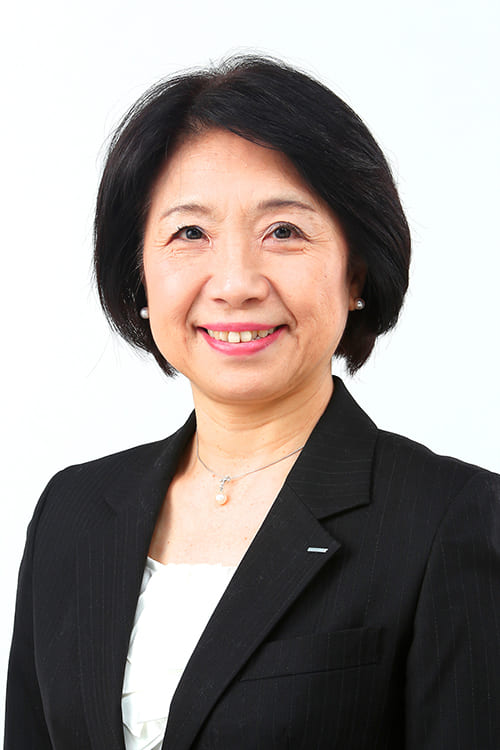
What she meant by “preserve forests” is to maintain them in a healthy state through a certain amount of human intervention. She explained that forests that are too dense allow little sunlight to reach the ground, which makes it hard for smaller plants to grow and animals and microorganisms to live there, leaving the soil thin and hard. Such soil is incapable of absorbing rainwater and increases the risk of landslides.
Suntory’s Natural Water Sanctuary Initiative, which started in 2003, aims to maintain forests rich enough to accommodate diverse ecosystems and serve as reliable water sources in Japan. As of April, there are 21 Suntory Natural Water Sanctuaries nationwide, totaling an area of approximately 12,000 hectares.
With support from over 40 researchers and experts in various fields, the initiative adopts scientific, fieldwork-based approaches. In addition to conducting land surveys and field research on animals and insects as well as soil and plants, “We use measurement systems consisting of technologies such as aerial laser surveys to gain a cross-sectional view of the entire forest,” Ono said, emphasizing that it is important to design a maintenance plan envisioning what the forests will be like in 100 years’ time.
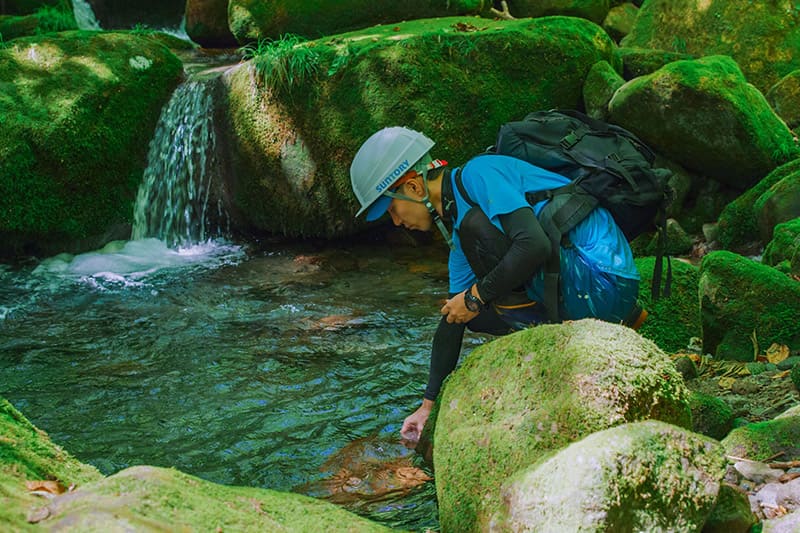
Based on the research, the company carries out the kind of forest maintenance work needed for each location, such as thinning, pruning, planting seedlings and taking measures against animal damage. “Trees of the same species found in two different locations may have different DNAs. Therefore, we make sure that we check and plant trees of the local DNAs,” she said.
Whether raptorial birds live in a forest or not is a key barometer of its condition. If these carnivores at the top of the ecological pyramid exist in the forest, that means that the rest of the biomass is also intact. This is why Suntory has also been involved in bird conservation activities since 1973. “Birds like hawks and eagles make their nests high up in trees. Without adequate forest maintenance, trees that surround the birds’ nests grow too high and dense, blocking their entries to the nests and forcing them to give up the nests eventually,” Ono said.
Suntory’s efforts to preserve forests and biodiversity do not only ensure the supply of water for the company’s business but also contribute to achieving the global “30 by 30” target to conserve or protect 30% of both land and sea areas by 2030. In April, Suntory joined the 30 by 30 Alliance for Biodiversity, a public-private coalition established by the Japanese government in line with the global target.

To achieve this target, a key role will be played by what is known as “other effective area-based conservation measures” (OECM), defined by the U.N. Convention on Biological Diversity as “A geographically defined area other than a Protected Area, which is governed and managed in ways that achieve positive and sustained long-term outcomes for the in situ conservation of biodiversity with associated ecosystem functions and services and where applicable, cultural, spiritual, socio–economic, and other locally relevant values.” Suntory aims to get one of its Natural Water Sanctuaries registered as a an OECM this year, and hopefully others in the following years.
Suntory’s environmental efforts extend to areas far from Japan. It launched the Peatland Water Sanctuary initiative jointly with Beam Suntory in Scotland in October 2021. Ono explained that peatland plays an important role in retaining water and maintaining its quality, conserving biodiversity and storing carbon. But that is not the only reason why the company is trying to restore and preserve peatland in a country so far away. Peat is indispensable in making Scotch whisky, known for its smoky flavor. Suntory learned how to make its first whisky from Scotland more than a century ago. “We want to contribute to making this Scottish culture sustainable. You could say that it is our way of returning the favor,” Ono said.

